
BMW G 310 R Launching Soon
- Apr 26, 2018
- Views : 16562

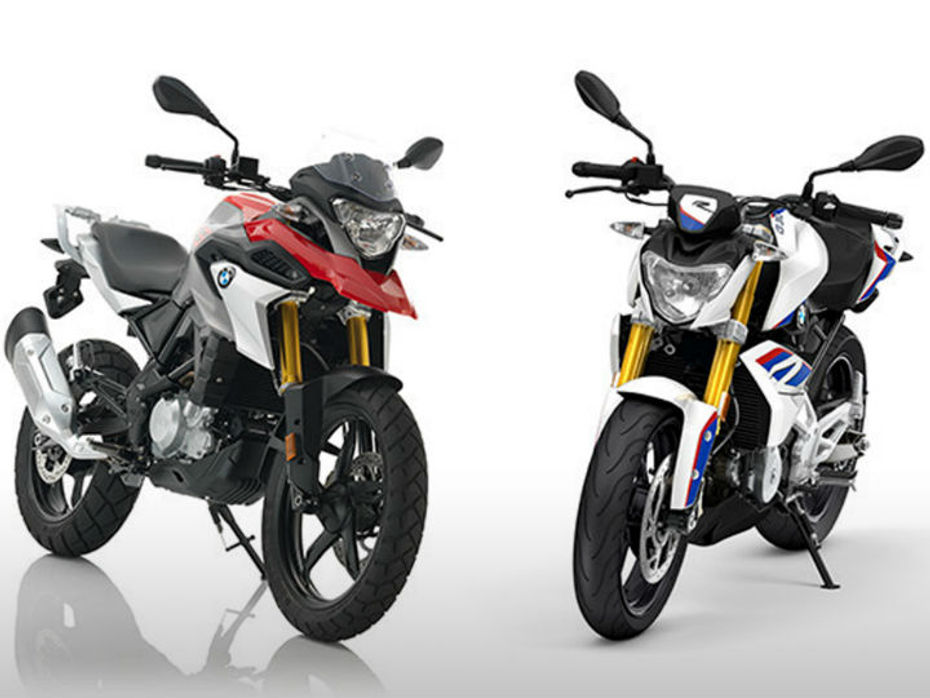
Update: BMW G 310 R and G 310 GS Launched In India
Design:
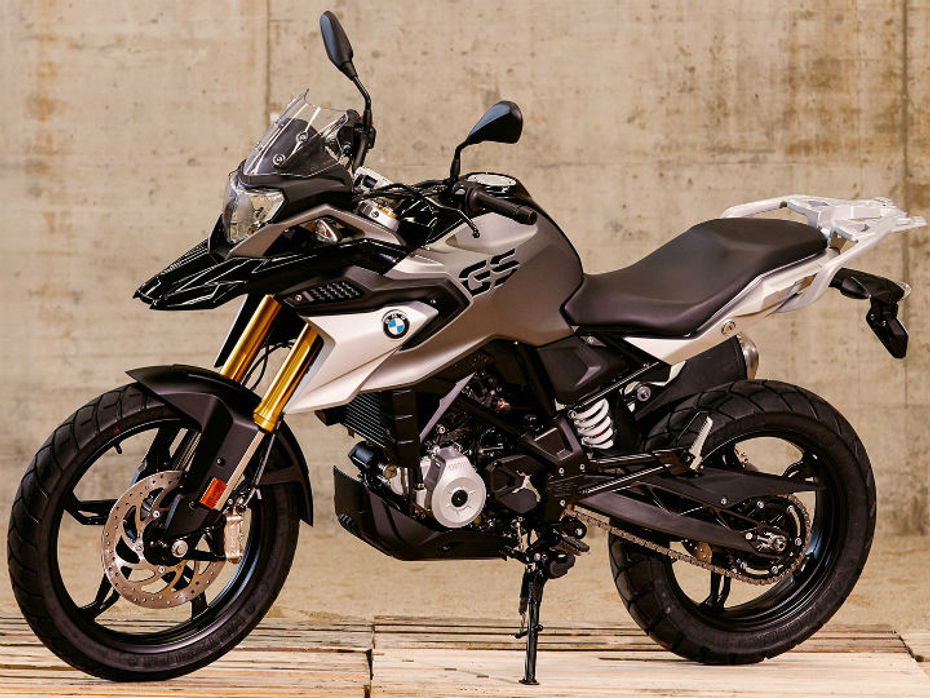
Though the BMW G 310 R and G 310 GS share a common platform, BMW Motorrad has approached each bike with a different design language. The G 310 GS, as the name suggests, draws inspiration from the legendary, all-conquering GS range. The overall silhouette is unmistakably GS-esque, with large muscular extensions on the tank bearing the famed BMW logo. With jagged lines, the tank flows into the beak-like front fender. Though the famed (or notorious depending on your OCD level) asymmetric headlights are absent, the inverted-triangle halogen lamp with flyscreen on top is smartly designed to suit the bike. The shapely single-piece seat ends in a rather high tail section, complete with a rugged luggage rack. The engine nestling inside the tubular steel frame comes with a belly pan to further enhance its tough demeanour.
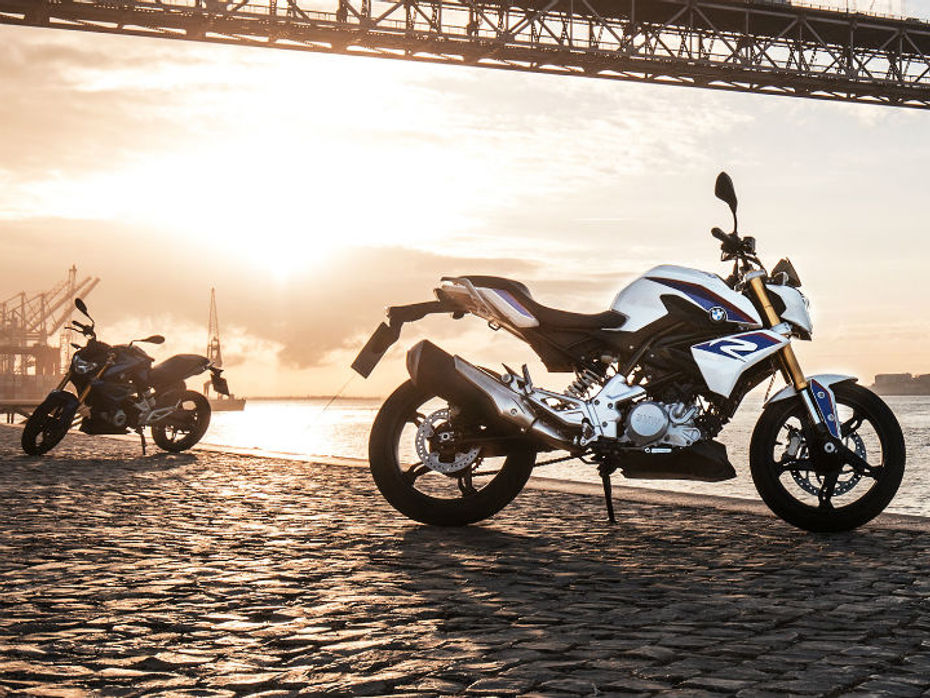
The BMW G 310 R on the other hand carries the tarmac-tearing genes of the S 1000 R. The mass-forward design is accentuated by the sinewy lines of the tank and the radiator cowls, which is topped off by the fat gold-finished inverted forks. The stubby tail section complements the meaty rear rubber but the exhaust design looks a tad bloated for this sporty motorcycle. This naked bike also features a single-piece seat and an ergonomic single-piece handlebar for optimum comfort while riding down the streets or highways.
Usage:
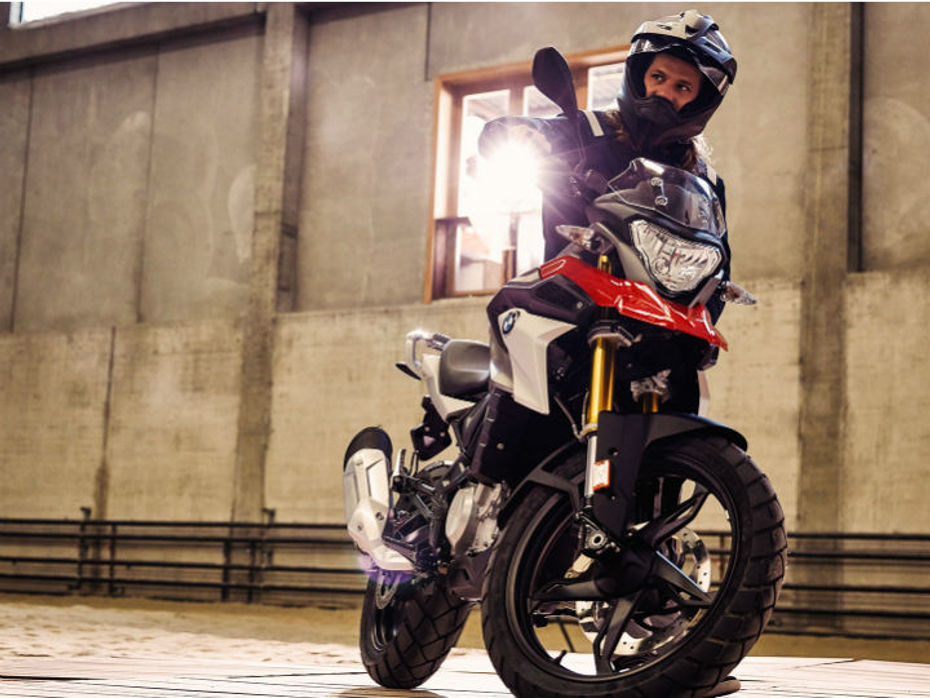
The G 310 GS is made for riding with relative ease over both level roads and uneven terrain, thanks to its long-travel suspension, dual-purpose tyres and adventure-friendly design. This makes it the perfect companion to explore the countryside. Mind you, it is not a hardcore off-roader, though. Both the 310 GS and the 310 R have the same 313cc single-cylinder mill with liquid cooling, DOHC configuration and fuel injection. The power figures are also same, at 34PS arriving at 9500 revs, and 28Nm at 7500rpm.
Thanks to the TVS Apache RR 310, us Indians already have some inkling of what BMW’s smallest engine will feel like. While the powerplant is peppy, we felt the refinement could’ve been improved. However, the exact character of this powerplant in the two Beemers is yet to be ascertained. The engine pairs with a 6-speed gearbox linked to a chain drive. The G 310 GS has an endless Z-ring chain which is apt for off-road riding as it offers better flexibility, lubrication and longer service life than the road-biased endless O-ring chain in the G 310 R.
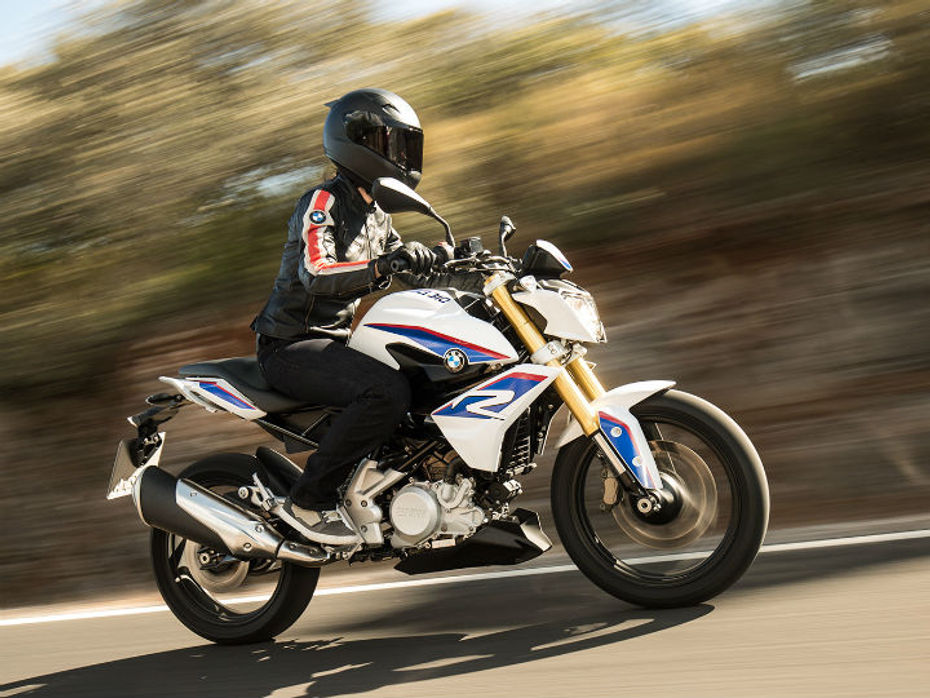
For better versatility, the G 310 GS has a minimum octane rating of RON 91, whereas the road-biased G 310 R comes with a minimum octane rating of RON 95. The G 310 R is perfect for city riding, with the occasional highway jaunts when things get mundane. Interestingly, both the motorcycles have the same claimed top speed of 143kmph and a generous 10,000km regular service interval.
Cycle Parts:
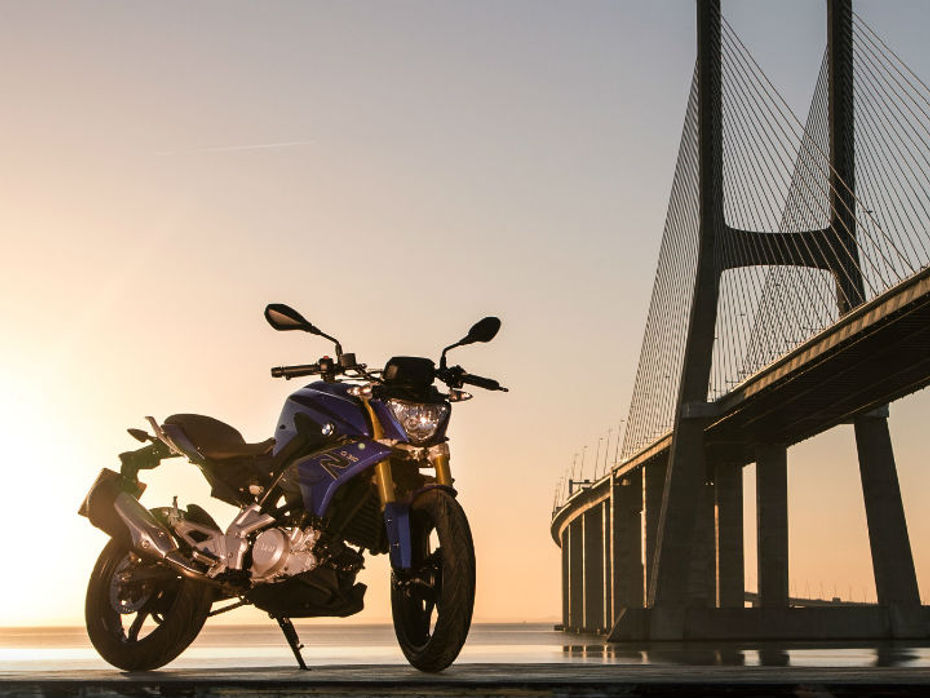
The BMW G 310 GS is better equipped to tackle uneven terrain thanks to its 41mm upside down forks and rear monoshock offering 180mm of travel at both ends. The 41mm front fork on the G 310 R offers relatively less travel, at 140mm. The travel of the rear monoshock stands at 131mm. Both bikes get adjustable preload on the rear suspension.
The brakes are common for both the motorcycles: a 300mm front disc held by a radially mounted 4-piston calliper, and a 240mm rear disc with a single-piston floating calliper. When things get hairy, fret not, as both the bikes feature dual-channel BMW Motorrad ABS as standard. The G 310 GS wears dual-sport Metzeler Tourance rubber on its 19-inch front and 17-inch rear aluminium alloy wheels, measuring 110/80 R19 up front and 150/70 R17 at the rear. The G 310 R, on the other hand, features 17-inchers at both ends, wrapped with 110/70 R17 for the front and 150/60 R17 for the rear (both Michelin Pilot Street units).
Dimensions:

As expected for an adventure tourer, the G 310 GS features a 46mm longer wheelbase than the G 310 R, at 1,420mm. The seat height of the GS is also on the higher side, at 835mm. In the UK market the optional Low Seat brings down the height to 820mm; and the Comfort Seat is 850mm high, in favour of better cushioning. The seat height of the G 310 R stands at a fixed 785mm.
Unfortunately, the GS does not come with a long-range tank, as both the bikes get an 11-litre fuel tank with approximately 1 litre as reserve. At 169.5kg, wet, the BMW G 310 GS is 11kg heavier than the G 310 R. The bike is also 60mm wider than the roadster, at 880mm, excluding the rear-view mirrors.
Pricing & Rivals:
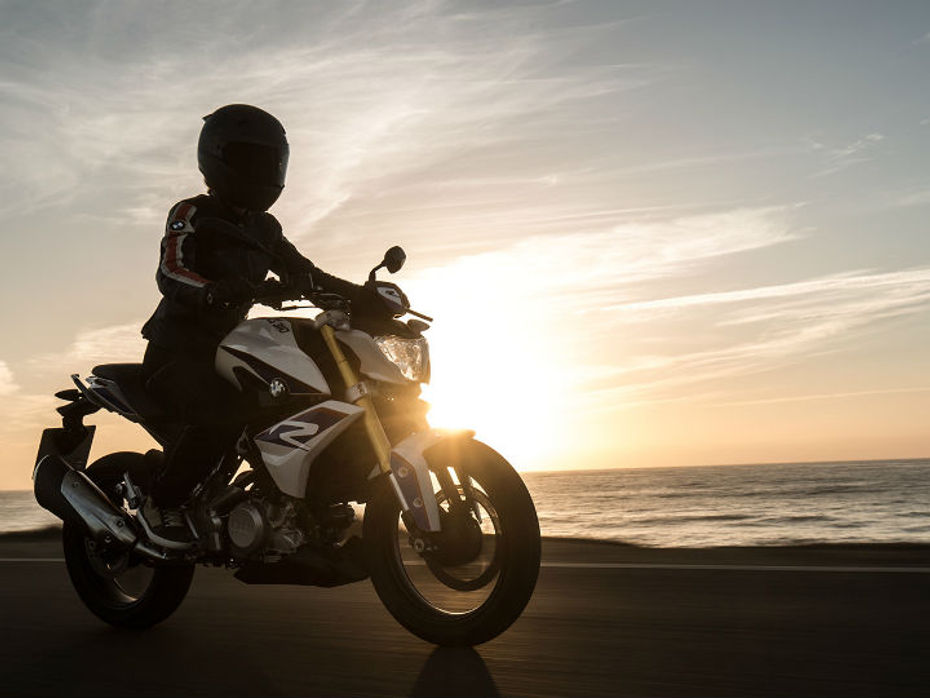
In order to uphold the brand’s badge value, BMW has priced the G 310 R at Rs 2.99 lakh, ex-showroom. Whereas the BMW G 310 GS is priced at Rs 50,000 premium over the ex-showroom price of the roadster.
The BMW G 310 R takes the fight to the 2018 KTM 390 Duke, Bajaj Dominar 400 and Mahindra Mojo XT300. The BMW G 310 GS, is a more premium alternative to the most affordable adventure motorcycle, the Royal Enfield Himalayan. It also rivals the Kawasaki Versys-X 300, which is much more expensive at Rs 4.6 lakh, ex-showroom, Delhi.


BMW G 310 R Launching Soon

BMW G 310 GS Unveiled At Auto Expo 2018

BMW’s Baby GS Spotted In India

TVS Working On A New Mid-displacement Motorcycle?

Take A Close Look At The Updated BMW G 310 GS

BMW G 310 GS BS6 vs KTM 390 Adventure: Which One Makes More Sense?

The BS6-compliant Baby Beemers Are Almost Here

Paper Fight: BMW G 310 GS BS6 vs Royal Enfield Himalayan
 BMW G 310 R
BMW G 310 R
 Kawasaki Ninja 300
Kawasaki Ninja 300
 Royal Enfield Himalayan 450
Royal Enfield Himalayan 450
 KTM 390 Adventure
KTM 390 Adventure
 BMW G 310 RR
BMW G 310 RR
India's largest automotive community
![BMW S 1000 RR[2022-2024] BMW S 1000 RR[2022-2024]](https://images.zigcdn.com/images/spacer.png) BMW S 1000 RR[2022-2024]
Rs. 20.75 Lakh
BMW S 1000 RR[2022-2024]
Rs. 20.75 Lakh
 BMW G 310 RR
Rs. 3.05 Lakh
BMW G 310 RR
Rs. 3.05 Lakh
 BMW G 310 R
Rs. 2.90 Lakh
BMW G 310 R
Rs. 2.90 Lakh
 BMW R 1250 GS
Rs. 20.55 Lakh
BMW R 1250 GS
Rs. 20.55 Lakh
 BMW M 1000 RR
Rs. 49.00 Lakh
BMW M 1000 RR
Rs. 49.00 Lakh